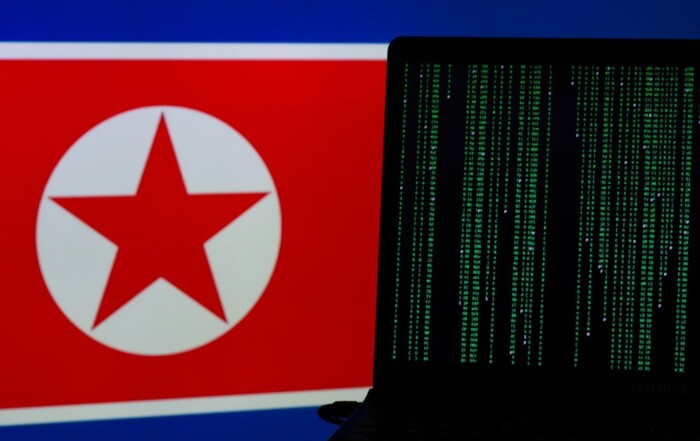Gang Stalking Or Transnational Repression
The Very Odd Crime of Gang Stalking or Transnational Repression – A Real Crime or Conspiracy Theory – the Evidence Will Tell the Story!
But Do Not Blame The Victim!
Author:
• SCARS Editorial Team – Society of Citizens Against Relationship Scams Inc.
About This Article
The article delves into the complexities surrounding gang stalking, a phenomenon characterized by systematic harassment and surveillance of individuals by a network of perpetrators. While gang stalking is often dismissed as a conspiracy theory, it has a basis in fact, referred to as Transnation Repression.
Toxic victim blaming exacerbates the distress experienced by targeted individuals, undermining their credibility and perpetuating the cycle of abuse.
Additionally, the article explores the concept of transnational repression, where foreign governments target individuals abroad, and discusses how criminal gangs engage in similar tactics.
It emphasizes the importance of distinguishing between reality and conspiracy theories and advocates for supporting victims and combating victim blaming.
Finally, the article highlights the need for critical thinking, evidence-based assessment, and community support to address real instances of gang stalking effectively.

The Very Odd Crime of Gang Stalking, But Is it Really Transnational Repression?
What is Gang Stalking?
“Gang stalking,” also known as “organized stalking,” refers to the systematic harassment, surveillance, and intimidation of an individual or group by a network of individuals, often referred to as “perpetrators” or “stalkers.” This phenomenon involves coordinated efforts to monitor and disrupt the victim’s daily activities, invade their privacy, and instill fear and paranoia.
Gang stalking can manifest in various forms, including following the victim, monitoring their communications, vandalizing their property, spreading rumors or misinformation about them, and engaging in psychological manipulation tactics. Victims of gang stalking often report feeling isolated, paranoid, and powerless, as the perpetrators’ actions undermine their sense of security and well-being.
Despite being considered by some as a form of psychological harassment or conspiracy theory, gang stalking has garnered attention from mental health professionals, law enforcement agencies, and advocacy groups due to the profound impact it can have on victims’ mental health and quality of life.
Victim Blaming and Gang Stalking
In the context of gang stalking, toxic victim blaming can exacerbate the distress experienced by the targeted individual.
Those who experience gang stalking may already feel isolated, afraid, paranoid, and vulnerable due to the perceived threats, harassment and surveillance. Yet, as often happens, when victims attempt to tell others of their experience, they are automatically dismissed as mentally ill and believers in conspiracy theories.
When others dismiss or invalidate their experiences, attributing their concerns to paranoia or mental illness, it compounds their sense of helplessness and undermines their ability to seek support or protection. No victim deserves to be automatically dismissed, and they should not be challenged until there is reasonable proof that they are wrong – either by a total lack of evidence or a finding of mental illness.
Toxic victim blaming in gang stalking situations can take various forms. It may involve friends, family members, or authorities dismissing the victim’s claims, attributing their experiences to delusions or fantasies. In some cases, individuals may gaslight the victim, manipulating their perceptions and reality to further undermine their credibility. This can have devastating effects on the victim’s mental health and well-being, exacerbating feelings of fear, anxiety, and isolation.
Moreover, toxic victim blaming can perpetuate the cycle of abuse and harassment in gang stalking situations. By failing to hold the perpetrators accountable and instead focusing on discrediting the victim, society enables the continued victimization of individuals who are already vulnerable. This dynamic reinforces power imbalances and prevents the victim from accessing the support and resources they need to address the harassment effectively.
Even if the victim’s fear is unfounded, the fear exists regardless. Even victims who are experiencing paranoia deserve to be supported.
Transnational Repression
Yes, forms of ‘gang stalking’ do happen!
When foreign governments stalk, intimidate, or assault people in other countries, it is considered transnational repression according to the U.S. FBI.
Some countries’ governments harass and intimidate their own citizens living abroad. This violates the law and individual rights and freedoms.
Transnational repression may take the following forms:
- Stalking
- Harassment
- Hacking
- Assaults
- Attempted kidnapping
- Forcing or coercing the victim to return to the country of origin
- Threatening or detaining family members in the country of origin
- Freezing financial assets
- Online disinformation campaigns
Governments use transnational repression tactics to silence the voices of their citizens (or non-citizens connected to the country), get information from them, or coerce them to return to their country of origin.
Who Is Targeted
Foreign governments typically target:
- Political and human rights activists
- Dissidents
- Journalists
- Political opponents
- Religious or ethnic minority groups
Not Just Countries Doing It
The notion of “gang-stalking” typically refers to the belief held by individuals that they are being targeted, surveilled, or harassed by a coordinated group of people or entities. While there is little evidence to support the existence of organized gang stalking, some individuals, especially whistleblowers, former employees, critics, or advocates, may perceive themselves as targets of harassment or retaliation by corporations or other organizations – because it does happen.
This perception can stem from various factors, including past conflicts, legal disputes, or ideological differences.
In some cases, corporations or organizations may indeed employ tactics that could be perceived as harassing or retaliatory. For example, corporations might monitor the activities of former employees or whistleblowers to protect trade secrets or prevent the disclosure of sensitive information. They may also engage in public relations campaigns or legal actions to discredit critics or advocates who pose a threat to their interests.
However, it’s essential to distinguish between legitimate surveillance or legal actions taken by corporations and the belief in organized harassment or stalking. While individuals may genuinely experience harassment or retaliation, others may misinterpret normal business practices or legal actions as part of a coordinated effort to target them.
Overall, the use of the term “gang-stalking” to describe corporate or organizational retaliation is controversial and often lacks substantiated evidence, but it does not mean it is wrong. While instances of harassment or retaliation do occur, they should be addressed through appropriate legal channels and not conflated with fear of shadowy organizations.
Criminal Gangs and Cartels Gang Stalk Too!
Large criminal cartels and interstate/international criminal gangs engage in various forms of organized criminal activity, including harassment, intimidation, and surveillance, which could resemble aspects of gang stalking. However, it’s essential to distinguish between criminal organizations’ activities and the concept of gang stalking as it is often portrayed in conspiracy theories. But at the same time, recognize that by definition that is gang stalking too!
Criminal cartels and gangs do employ tactics such as surveillance, intimidation, or retaliation against individuals perceived as threats to their operations or interests. This includes rival gang members, informants, witnesses, or law enforcement personnel involved in investigating or prosecuting their activities.
However, the term “gang stalking” typically refers to a phenomenon where individuals believe they are being systematically harassed, monitored, or targeted by a shadowy group of people, often without evidence or credible documentation. While criminal organizations do engage in similar behaviors for nefarious purposes, the motivations and dynamics differ significantly from those depicted in conspiracy theories about gang stalking.
While criminal cartels and interstate gangs may engage in organized harassment or surveillance, they do so as part of their criminal activities. It’s essential to approach claims of gang stalking with critical thinking, considering the evidence and context of each situation. However, we should never be quick to give in to our biases and blame the victims.
Separating the Real from Conspiracy Theories
Separating reality from conspiracy theories regarding gang stalking is essential for maintaining perspective and addressing legitimate concerns while avoiding undue paranoia or fear.
Some individuals may genuinely experience harassment, surveillance, or retaliation, often termed gang stalking, it’s crucial to differentiate between real instances of harassment and baseless conspiracy theories.
Here are some key points to consider in distinguishing reality from conspiracy theory:
- Evidence-Based Assessment: Real instances of gang stalking often involve tangible evidence, such as documented incidents, credible witnesses, or physical surveillance. Conversely, conspiracy theories typically lack concrete evidence and rely on speculation, anecdotal accounts, or unfounded assumptions.
- Contextual Understanding: It’s important to consider the broader context of the situation, including any past conflicts, legal disputes, or personal grievances that may influence perceptions of harassment. Understanding the motivations and interests of all parties involved can help assess the validity of claims.
- Critical Thinking: Encouraging critical thinking and skepticism can help individuals evaluate claims of gang stalking more objectively. This involves questioning assumptions, verifying information from multiple sources, and considering alternative explanations for perceived incidents.
- Professional Guidance: Seeking advice from mental health professionals, legal experts, or other qualified professionals can provide valuable insights and support in navigating complex situations involving harassment or retaliation. These professionals can offer an objective perspective and help individuals distinguish between genuine concerns and paranoia.
- Community Support: Engaging with trusted friends, family members, or support groups can provide emotional support and validation for individuals experiencing harassment. Sharing experiences with others who have faced similar challenges can help individuals feel less isolated and better equipped to cope with their situation.
- Legal Recourse: Individuals who believe they are experiencing harassment or retaliation should explore legal avenues for addressing their concerns. This may involve filing complaints with relevant authorities, seeking protective orders, or pursuing civil remedies for damages. Legal professionals can provide guidance on the appropriate steps to take based on the specific circumstances.
By applying critical thinking, seeking professional guidance, and accessing community support, individuals can better navigate situations involving perceived gang stalking while distinguishing between reality and conspiracy theory. It’s essential to approach these issues with a balanced perspective and avoid succumbing to undue paranoia or unfounded accusations.
We have all seen movies about persecuted individuals being stalked by faceless organizations, but the reality is far more challenging. While this is going to be extremely rare, it is neither impossible nor improbable.
How to Know if You Are Being Gang Stalked?
Distinguishing between being gang-stalked and experiencing paranoia can be challenging due to similarities in behavior and perceptions. However, several factors can help individuals differentiate between the two:
- Objective Evidence: Gang stalking typically involves coordinated harassment by multiple individuals or groups over an extended period. Look for concrete evidence such as surveillance footage, witness accounts, or documented incidents to validate your experiences. It can also include communications that the victim has received.
- Pattern Recognition: Pay attention to recurring behaviors or events that seem orchestrated and targeted. Documenting incidents, including dates, times, and details, can help identify patterns and discern whether they are random or intentional.
- Contextual Analysis: Consider the context of the situation and evaluate whether there are plausible explanations for the observed behaviors. Paranoid individuals may interpret neutral or coincidental events as evidence of persecution, while gang stalking often involves deliberate and coordinated actions.
- Social Support: Seek input from trusted friends, family members, or mental health professionals who can provide an objective perspective on your experiences. They can offer insight into whether your concerns are grounded in reality or influenced by paranoia.
- Self-Reflection: Take time to reflect on your thoughts, emotions, and beliefs surrounding the perceived harassment. Are there underlying factors such as anxiety, trauma, or preexisting mental health conditions that may contribute to feelings of persecution?
- Professional Evaluation: If uncertain, consider seeking a professional evaluation from a mental health professional experienced in paranoia and delusional disorders. They can conduct assessments to determine whether your experiences align with symptoms of gang stalking or paranoia.
Ultimately, distinguishing between gang stalking and paranoia requires a careful examination of evidence, context, and individual perceptions. It’s essential to approach the situation with an open mind and consider multiple perspectives before reaching conclusions.
Remember
The old saying about being paranoid is:
“Just because you’re paranoid doesn’t mean they aren’t after you.”
This phrase, often attributed to American author Joseph Heller in his novel “Catch-22,” highlights the notion that paranoia can sometimes be justified, especially in situations where one is genuinely facing threats or dangers. It acknowledges the complex interplay between perception, reality, and the possibility of genuine threats, cautioning against dismissing concerns outright solely on the basis of paranoia.
Summary
When someone says they are the victim of a crime we should believe them until there is evidence to support a conclusion.
We need to stop victim blaming and provide support to those that we can!
While it is true that victimization does traumatize individuals and can lead to mental disorders, it does not mean they are wrong. It may simply mean they are unable to prove their case because of it. Fear impairs cognition and can develop into serious disorders, but we have to look beyond our own biases into the possibility that there is a valid basis for the victim’s original fear and support them in every way possible. After all, these same biases use to (and still do) deny victims of domestic abuse, sexual assault, and many other crimes the support they need by being believed!
We must end victim blaming. To learn more about that visit www.EndScamVictimBlaming.org
An Example Gang Stalking Case
Examples of Country-Based Transnational Repression
-
01.29.2024 One Iranian and Two Canadian Nationals Indicted in Murder-for-Hire Scheme
-
04.17.2023 Two Arrested for Operating Illegal Overseas Police Station of the Chinese Government
-
03.28.2023 National Counterintelligence and Security Center: Don’t Be a Pawn of Repressive Foreign Governments
-
03.21.2022 U.S. State Department Statement Regarding Transnational Repression
-
07.13.2021 Iranian Intelligence Officials Indicted on Kidnapping Conspiracy Charges
-
10.28.2020 Eight Individuals Charged with Conspiring to Act as Illegal Agents of the People’s Republic of China
-
01.15.2020 Two Individuals Sentenced in Connection with Work on Behalf of Iran
Important Information for New Scam Victims
- Please visit www.ScamVictimsSupport.org – a SCARS Website for New Scam Victims & Sextortion Victims
- SCARS Institute now offers a free recovery program at www.SCARSeducation.org
- Please visit www.ScamPsychology.org – to more fully understand the psychological concepts involved in scams and scam victim recovery
If you are looking for local trauma counselors please visit counseling.AgainstScams.org or join SCARS for our counseling/therapy benefit: membership.AgainstScams.org
If you need to speak with someone now, you can dial 988 or find phone numbers for crisis hotlines all around the world here: www.opencounseling.com/suicide-hotlines
SCARS Resources:
- Getting Started: ScamVictimsSupport.org
- FREE enrollment in the SCARS Institute training programs for scam victims SCARSeducation.org
- For New Victims of Relationship Scams newvictim.AgainstScams.org
- Subscribe to SCARS Newsletter newsletter.againstscams.org
- Sign up for SCARS professional support & recovery groups, visit support.AgainstScams.org
- Find competent trauma counselors or therapists, visit counseling.AgainstScams.org
- Become a SCARS Member and get free counseling benefits, visit membership.AgainstScams.org
- Report each and every crime, learn how to at reporting.AgainstScams.org
- Learn more about Scams & Scammers at RomanceScamsNOW.com and ScamsNOW.com
- Learn more about the Psychology of Scams and Scam Victims: ScamPsychology.org
- Self-Help Books for Scam Victims are at shop.AgainstScams.org
- Donate to SCARS and help us help others at donate.AgainstScams.org
- Worldwide Crisis Hotlines: International Suicide Hotlines – OpenCounseling : OpenCounseling
- Campaign To End Scam Victim Blaming – 2024 (scamsnow.com)
-/ 30 /-
What do you think about this?
Please share your thoughts in a comment below!
More ScamsNOW.com Articles
SCARS LINKS: AgainstScams.org RomanceScamsNOW.com ContraEstafas.org ScammerPhotos.com Anyscam.com ScamsNOW.com
reporting.AgainstScams.org support.AgainstScams.org membership.AgainstScams.org donate.AgainstScams.org shop.AgainstScams.org
youtube.AgainstScams.org linkedin.AgainstScams.org facebook.AgainstScams.org












Leave A Comment